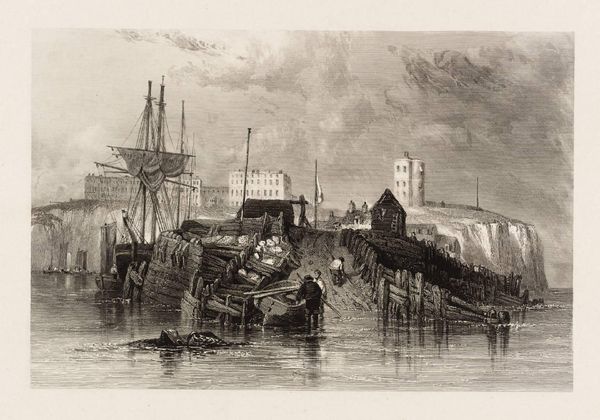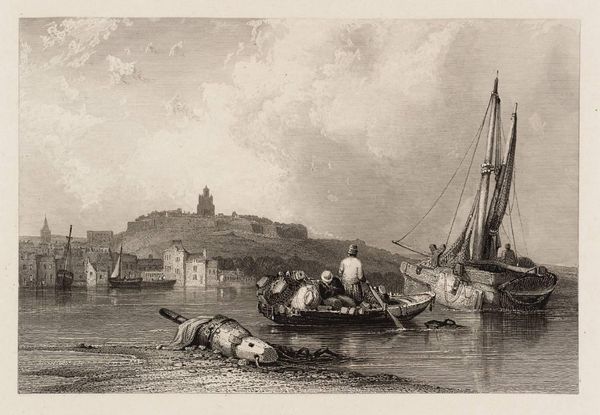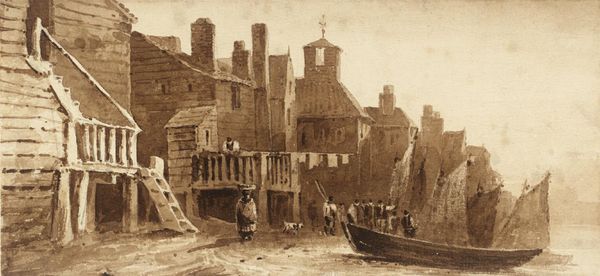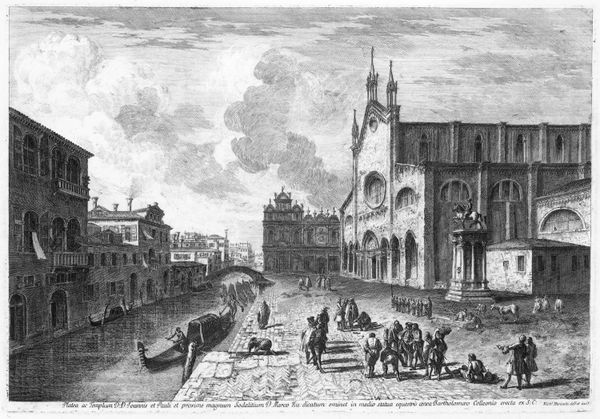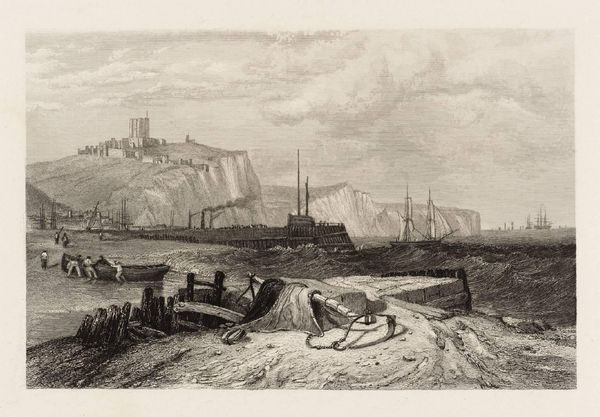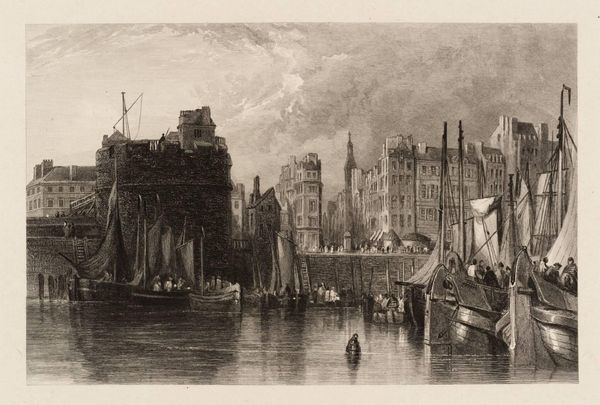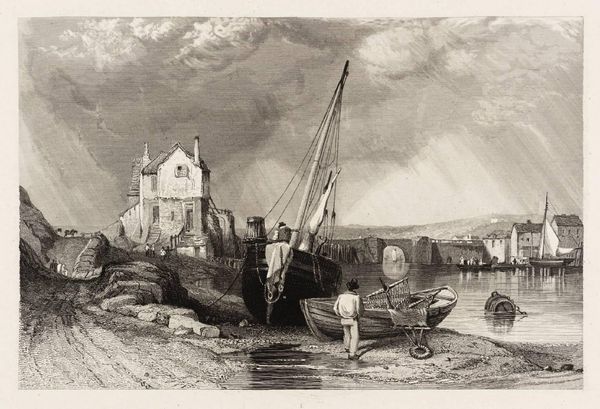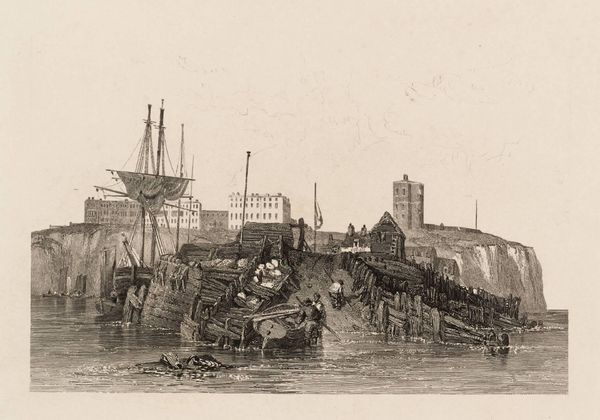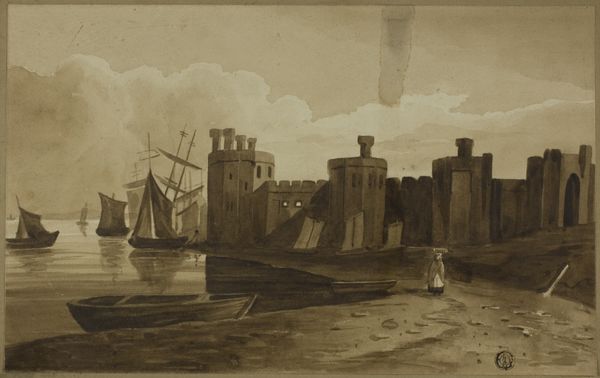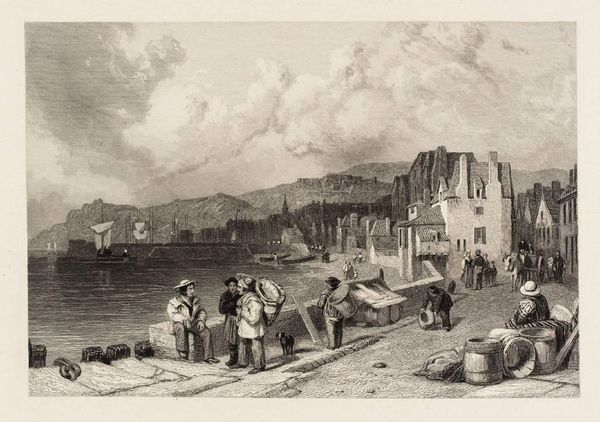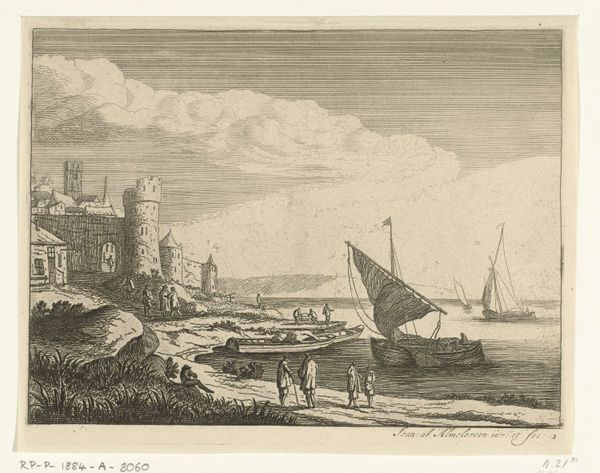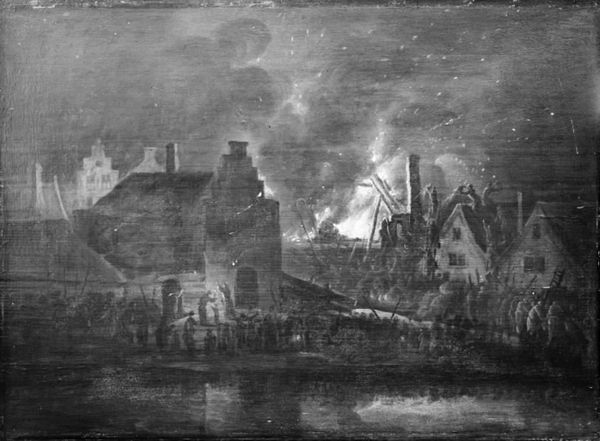
Castle Rushen, Castleton, Isle of Man, engraving by William Miller after Leitch 1845
0:00
0:00
drawing, print, photography, engraving
#
drawing
# print
#
sculpture
#
landscape
#
photography
#
romanticism
#
cityscape
#
engraving
Copyright: Public domain
This engraving of Castle Rushen by William Miller after Leitch presents a seemingly tranquil harbour scene, yet it speaks volumes about the interplay of power, trade, and the weight of history. The castle itself, a formidable structure, dominates the scene. The castle as a symbol, has its roots in ancient fortifications. From early forts to medieval strongholds, it’s always been a place of security and authority. In Leitch's engraving, the castle is not merely a building; it’s a silent overseer, a reminder of past conflicts, and a statement of enduring power. Consider the lantern perched on the harbour wall. The light it casts is both practical and symbolic. For centuries, lamps have not only guided sailors but have also served as symbols of enlightenment, of hope amidst darkness. You can find a similar motif in religious art, where light symbolizes divine guidance. The echoes of these symbols reverberate through time, a constant reminder of our shared human experiences. It’s a visual representation of our collective memory, the way images and symbols can evoke deep emotions, and connect us to the past.
Comments
No comments
Be the first to comment and join the conversation on the ultimate creative platform.
